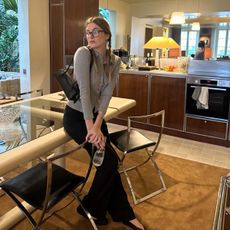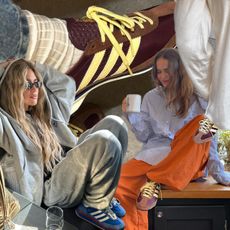I Got Botox for the First Time—Here's What You Need to Know
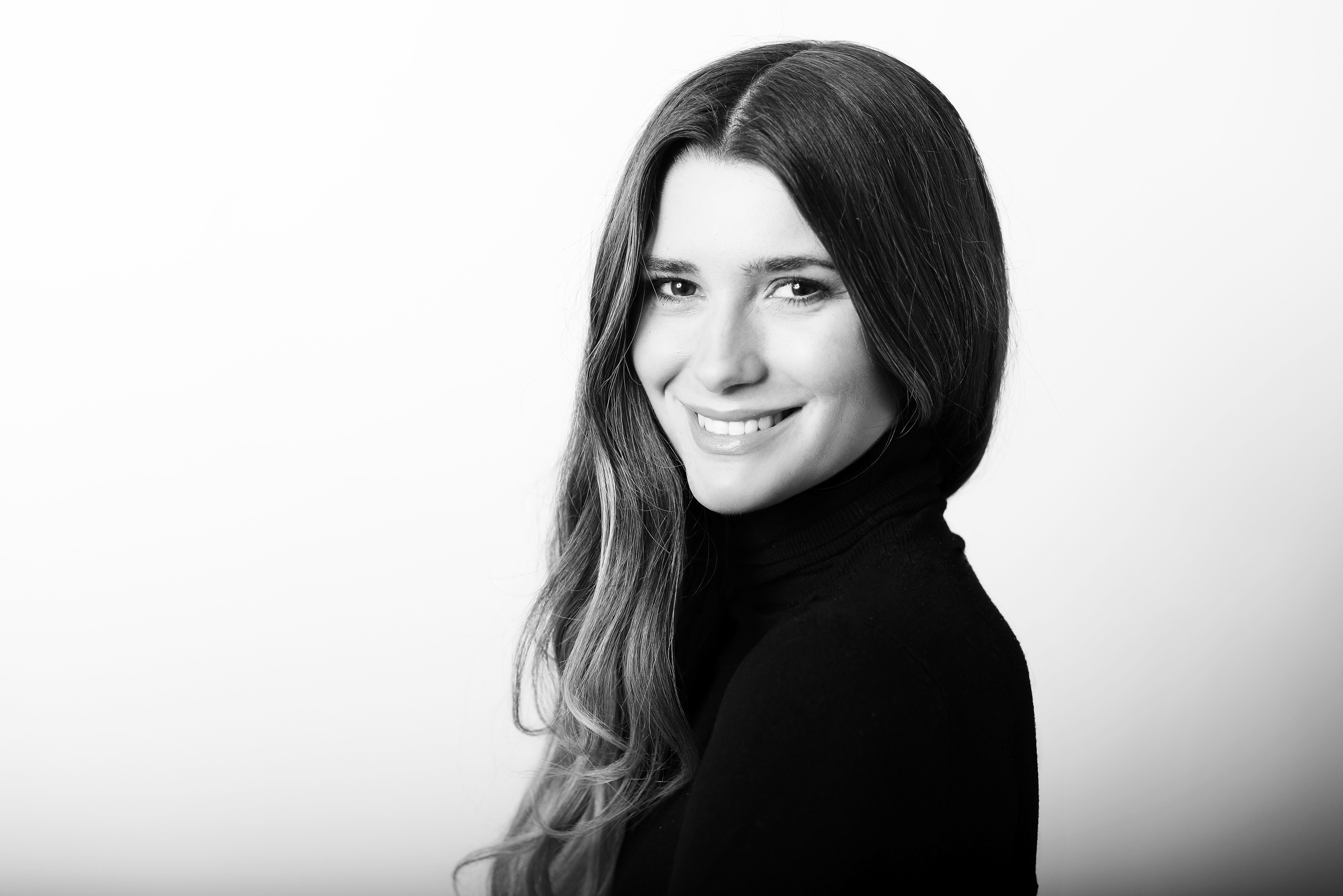
Since around my mid-20s, I've been curious about Botox. Despite being a beauty editor and having access to great skincare and professional treatments, I had started to notice some changes. I've always had naturally hooded eyes and low, straight eyebrows, and while I like to enhance and highlight these features with my makeup, I noticed that my eyes weren't quite as "awake" as they used to be, and the eye makeup that I'd depended on for years just wasn't working on my eye shape anymore. I'd started to develop some crow's feet around my eyes, and where the outside of my eyelid curves downwards, doing any kind of winged eyeliner is tricky over the natural fold of my lid. I also noticed that my brows had sunk downwards a little too, which I feel made me look a little bit cross when my face was fully relaxed. Of course, we all have things that we fixate on that no one else would notice.
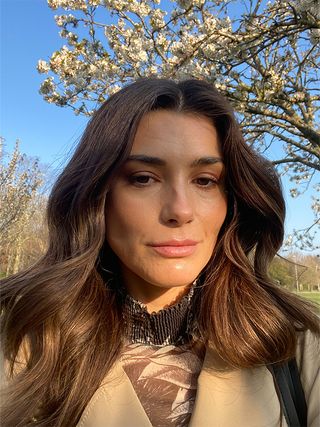
Before getting Botox.
Subconsciously, I've been raising my eyebrows up to make myself look more awake and refreshed, but over time, this left me with a horizontal line across my forehead from permanently raising my brows all day every day. While I'm on it with a skincare routine of retinal, vitamin C and SPF, I knew there were limitations to what skincare could do to make big changes to my skin—which led me to investigate aesthetic tweakments such as Botox for the first time.
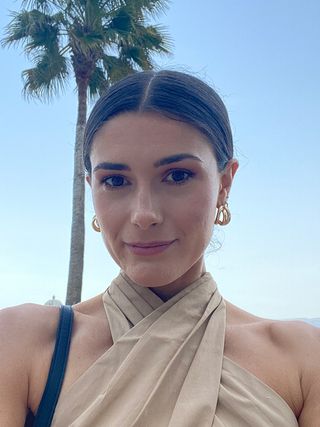
Before getting Botox.
I'd first like to preface this article by acknowledging that no one ever needs Botox, and I'd never want this article to sway you into thinking that you need it. Going down the route of injectables is a personal choice, and people may choose to do it for many reasons. I had been considering Botox for the past 18 months, but I wanted to do thorough research and find the ideal (and highly qualified) practitioner for me. So if you want to find out more about Botox and my experience with it, read on below for a comprehensive guide to first-time Botox with expert insight from Dr Raj Acquilla, one of the leading practioners in facial aesthetics.
First, what is Botox?
Much like how we call a vacuum a Hoover, Botox is a brand name that is often used in place of its actual name, botulinum toxin. "Botulinum toxin in microdoses in facial aesthetics interferes with the communication between the nerve ending and the end target—in this case, the facial muscles," says Acquilla. "Low doses in the frontalis procerus corrugator [the muscles that lift the brow] and orbicularis oculi muscles [the eyelid muscle] create stretching of the skin, improved skin quality, eyebrow lifting and an appearance of rested-ness and wellness in the eye and periorbital regions," he says.
What age do people typically have their first Botox treatment?
Acquilla says that most people he sees for first-time Botox are in their early 30s. I had my treatment done at age 27, and he classed my Botox treatment as a preventative treatment. However, he is also seeing a rise of patients having first-time Botox in their 60s, too. While Botox is well-known for its anti-wrinkle and lifting effects around the eyes and forehead, it can also be used in many other ways. For example, it can be injected into the masseter muscle on the jaw to slim the lower part of the face and help prevent teeth grinding or even injected into the palms of the hands to reduce excessive sweating.
How much does Botox cost?
The cost of Botox really depends on the area(s) you're having treated, the practitioner you see and where they are located. My treatment with Acquilla addressed my crow's feet, brow area and forehead (which is one of his most common treatments) and would usually cost around £300 to £400 in his London clinic. However, the only way to determine the cost of your treatment is to have a consultation. Here, your practitioner will be able to assess your personal needs and provide a customised quote. Everyone has different needs, so this will vary from person to person, and prices will vary from location to location.
How can you make sure your practitioner is qualified to inject Botox?
What many might not realise is that because this industry is currently unregulated, it's very easy for non-healthcare individuals to perform Botox treatments without certain qualifications or training standards. Not only is it dangerous, but you may also have unsatisfactory results. In fact, Acquilla tells me that he's conducting more and more corrective work from Botox. So it's safer to see a qualified expert, but also, by seeking an experienced doctor in the first place, you'll get better results. Your practitioner should be registered with the General Medical Council, British College of Aesthetic Medicine (BCAM) or the British Association of Cosmetic Nurses (BACN). Do research on your practitioner and their qualifications, and don't be afraid to ask questions during your consultation. A directory such as The Tweakments Guide is a helpful way to find experienced practitioners near to you. "An experienced practitioner will be able to give you a tailored, bespoke treatment rather than a one-size-fits-all treatment," explains Acquilla.
My Botox experience:
Upon arriving at Acquilla's clinic in Chelsea, I had a consultation on my medical history and what I wanted to achieve from my treatment. I explained that I wanted my eyes to look more refreshed and open, with a slight elevation of my brows and to address my forehead lines. These are some of the most common concerns seen in the clinic. However, Acquilla's approach is totally personalised and goes beyond the treatment alone. He likens his technique to that of a couturier who designs a treatment on your individual needs and even your personality. After all, Jennifer Lopez and Taylor Swift would both wear very different dresses for the red carpet, and the same goes for facial aesthetics. He asked me to describe who I am, my personality, how I like to wear my makeup and how I want to be perceived, too. He also studied my orbital eye shape in great detail. "For example, Keira Knightley has a quite narrow orbital aperture and almond eyes that will close off when smiling. Whereas someone like Natalie Portman has more open eyes—she is more 'Disney' than Keira Knightley," says Acquilla. "Whereas on you, it will make you look softer. It's more youthful and attractive, but it's going to change the way that you look and how people perceive you," he told me.

Immediately after my Botox treatment.
I wanted to retain my brow features and still look like me, so we agreed that we wanted to open my eyes and lift my eyebrows very slightly. This would result in my outer eyelid being more open and my eyebrows elevated at a 10-degree angle. It would be subtle enough that I would still look like me but a little more awake and refreshed. Acquilla injected around my eyes, eyebrows and forehead, and the entire treatment took a matter of minutes.
Does Botox hurt?
In short, no. Of course, we all have different pain tolerances, but as someone who isn't a fan of needles, I found it to be totally fine. During my appointment, Acquilla used incredibly fine needs that barely pinched my skin. To be totally honest, a blood test is more painful than this! However, some clinics may apply a numbing cream prior to reduce pain. The only area that was slightly more sensitive was just above my eyebrow. Because I had been compensating by subconsciously raising my brows, I had developed more muscle here, so it was slightly more sensitive. Acquilla told me that some people may experience a dull headache after the treatment (which I did), but this went away after a couple of hours and paracetamol. Because the needles were so fine, I was left with minimal redness on the injection points, which were barely noticeable and subsided within an hour.
How long does it take for Botox to work?
Botox takes two weeks to see the full effects. However, I started to notice initial results after five days.
How long does Botox last?
Acquilla explained that you can typically expect Botox results to last between three and five months. However, this varies from person to person and may be affected by how much you exercise and how expressive your face is.
What are the risks associated with Botox?
Immediately after Botox, you should avoid doing anything too intense, such as saunas, exercise and drinking alcohol, but these can be resumed 24 hours after the treatment. However, there are some risks to be aware of, and a good practitioner will be happy to discuss these with you before your treatment, and you will need to sign a consent form. "The risks of botulinum toxin are generally associated with misplacement, incorrect dilution and dosage, and the orientation of injection," says Acquilla. "The most common risk is heaviness or a descent of the eyebrow and the upper eyelid. This is generally because of injecting the toxin into a muscle that has a suspensory function in the upper third of the face. Very rarely, it can cause eyelid ptosis [drooping], which affects vision and can be relieved by eyedrops such as iopidine and oxymetazoline," he says. "Injection around the lateral orbit for crow's feet can also result in a reduction in the mechanical pump effect of that muscle and therefore increasing lymphatic outflow obstruction and swelling in the lower eyelid, which ultimately makes our patients look more tired." This is why it's crucial to see a practitioner who is qualified and experienced and who can deliver safe results.
Eyebrow Botox before-and-after images:

Before and after: before my Botox treatment and two weeks after.
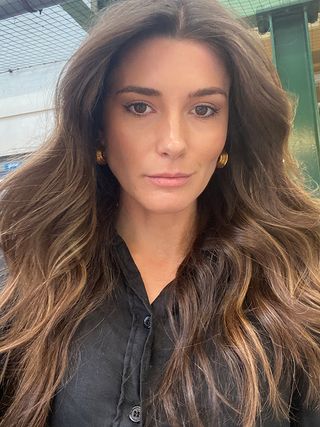
Three weeks after my Botox treatment.
Is Botox worth it?
Is Botox worth it? After my treatment with Acquilla, I would most definitely say that my Botox treatment was worth it. My results are subtle (which was what I was after), but I feel that I look more refreshed and the lines around my forehead and eyes have lessened. Close friends of mine could notice a subtle difference too. As my brows have been lifted upwards, I'm no longer raising them subconsciously and causing the forehead lines. My outer eyelid area is now smoother, which means I can more easily apply eye makeup such as winged eyeliner (which used to crease), and it now stays put for longer. It's also reassuring knowing that the effects will wear away after a few months if I wanted to revert to my natural state.
It has now been three months since my treatment, and I've found that the Botox has worn off. Movement in my forehead and around my eyes has fully returned, although the expression lines are yet to settle back in. Would I have Botox again? Quite possibly—but I have to admit that I don't think I could foot the cost of a treatment every three months, as it is a big financial commitment. Going to see a practitioner like Acquilla is definitely worth the investment, as you'll be getting the results that you're seeking, as well as being in a safe pair of hands.
Up Next: I'm a Skin Expert, and These Are the Tweakments That Are Worth Knowing About
This story was published at an earlier date and has since been updated.

Eleanor Vousden is the beauty editor for Who What Wear UK. She was previously deputy editor at Hairdressers Journal, health writer at Woman & Home and junior beauty editor at beauty website Powder. She has also contributed to Wallpaper and Elle Collections with written and styling work.
Working as a beauty journalist since 2015 after graduating in fashion journalism at the London College of Fashion, she has been highly commended at the BSME Talent Awards for her work on Powder and also contributed to the title winning Website of the Year at the PPA Awards.
Eleanor’s journalistic focus is to provide readers with honest and helpful beauty content. Through words, video and live broadcast, she has interviewed several celebrity makeup artists, hairstylists and top dermatologists throughout her career, as well as celebrities such as Sarah Jessica Parker and Scarlett Johansson. She has a particular interest in finding solutions for acne and eczema, which she has experienced firsthand. She has also amassed a large collection of fragrances and can never say no to a new candle.
When she’s not writing or testing the latest beauty product or treatments, she’s on the seafront in her hometown of Brighton and Hove, where she lives with her partner and her miniature dachshund.
